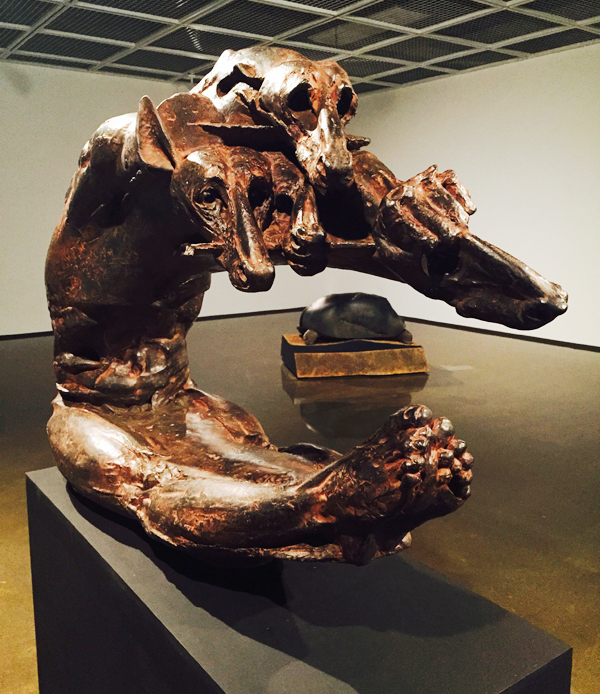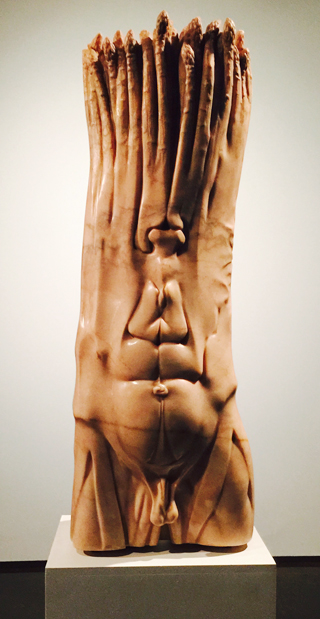Surreal sculptures spin stories based on various mythologies

“Study of Anubis 2” (1992), a bronze piece by Novello Finotti, shows the Italian veteran sculptor’s interest in Egyptian myths and the archetypal themes of death and rebirth. It is part of his first solo show in Korea at Seoul Museum.
The 38 pieces on display by the Verona-born artist seem to be deeply rooted in a tradition of Italian sculpture formed by such masters as Michelangelo in the 16th century, Gian Lorenzo Bernini in the 17th century and Antonio Canova in the 18th century.
Finotti’s sculptures are figurative and are mainly based on the human body. They are primarily made from marble of various colors and bronze. The 76-year-old veteran artist exquisitely combines the elegant qualities of the human anatomical form and the color and texture of marble, as his Italian predecessors did.
Regarding this, Seoul Museum quoted Antonio Paolucci, the director of the Vatican Museums, as saying, “Such absolute materials [as luminous marble of Carrara, Portuguese pink marble and Belgian black marble] demand an exclusive cult. They require, expect and claim the homage of rigorous sapience and phenomenal craft. Finotti has accepted the ‘bet’ and has dedicated his life to studying and perfecting the ways and techniques which permit approaching those noble substances, understanding, listing to and penetrating them.”
At the same time, Finotti’s works have different characteristics compared to those of the Italian old masters. His sculptures spin stories with complicated, symbolic layers, based on the fusion of various mythologies, literature and modern history, whereas his predecessors’ pieces told clear allegories, based on Greek and Roman mythology or Christian tales.

“Anatomical Plant” (1973-74), sculpted by Finotti out of Portuguese pink marble, is also part of the exhibition. By Moon So-young
“As time passes, my thoughts about death and rebirth are becoming deep,” Finotti told reporters at Seoul Museum last week.
“After Chernobyl” (1986-7), a marble sculpture depicting a human body distorted and upside down, adds the story of a tragedy in modern history to the archetypal story of death.
Some pieces are more surreal. “Anatomical Plant” (1973-74), made of Portuguese pink marble, is a male body fused with a plant. It is grotesquely erotic but, at the same time, gives the sense of full vitality and beauty.
“Several art museums expressed intention to invite the solo show but Finotti chose our museum, as he liked its spaces including Seokpajeong,” explained Ahn Jin-woo, curator and public relations team manager at Seoul Museum.
Seokpajeong, a traditional Korean house and garden used as the summer house of King Gojong’s father, is now part of the museum.
BY MOON SO-YOUNG [moon.soyoung@joongang.co.kr]
The exhibition runs through May 17. Admission is 9,000 won ($8.74) for adults. For details, call (02) 395-0100 or visit www.seoulmuseum.org.










with the Korea JoongAng Daily
To write comments, please log in to one of the accounts.
Standards Board Policy (0/250자)